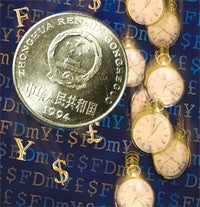Looking for more insights?
Sign up to stay informed about our latest article releases.
As the financial crisis has unfolded, hopes about China's ability to decouple from the slowing global economy have rapidly diminished. In response, on November 9, the Chinese government unveiled a massive stimulus package. Officials gave the headline figure as RMB 4 trillion (US$586 billion) to be spent over the next two years, which marks the first time in almost a decade that China has officially adopted a "proactive" fiscal policy. But will it work, and what is the outlook for the Chinese economy? China Knowledge at Wharton asked Wharton faculty and other experts for their views.

Sign up to stay informed about our latest article releases.